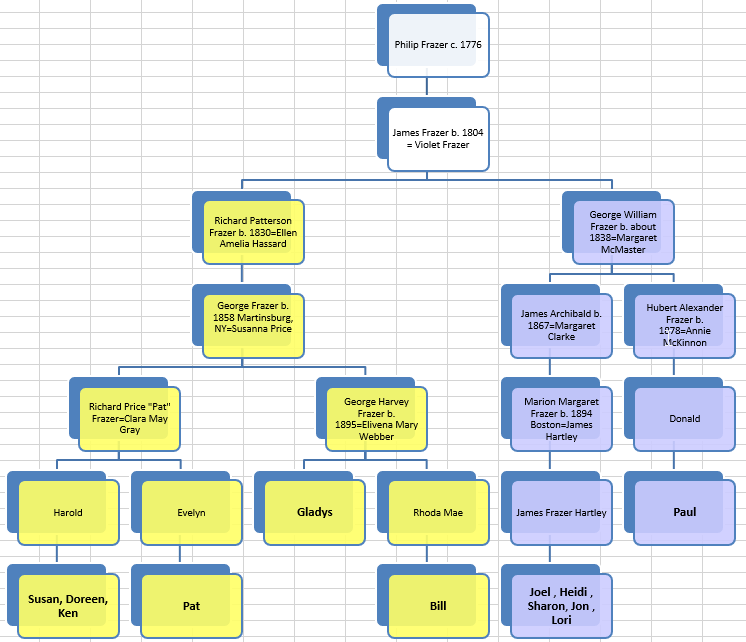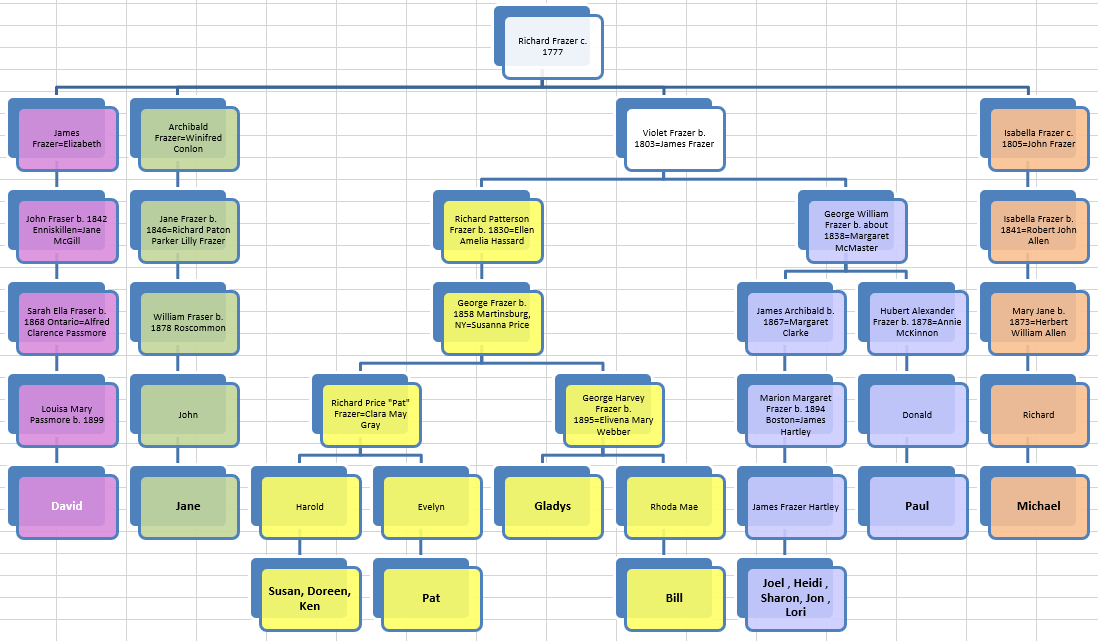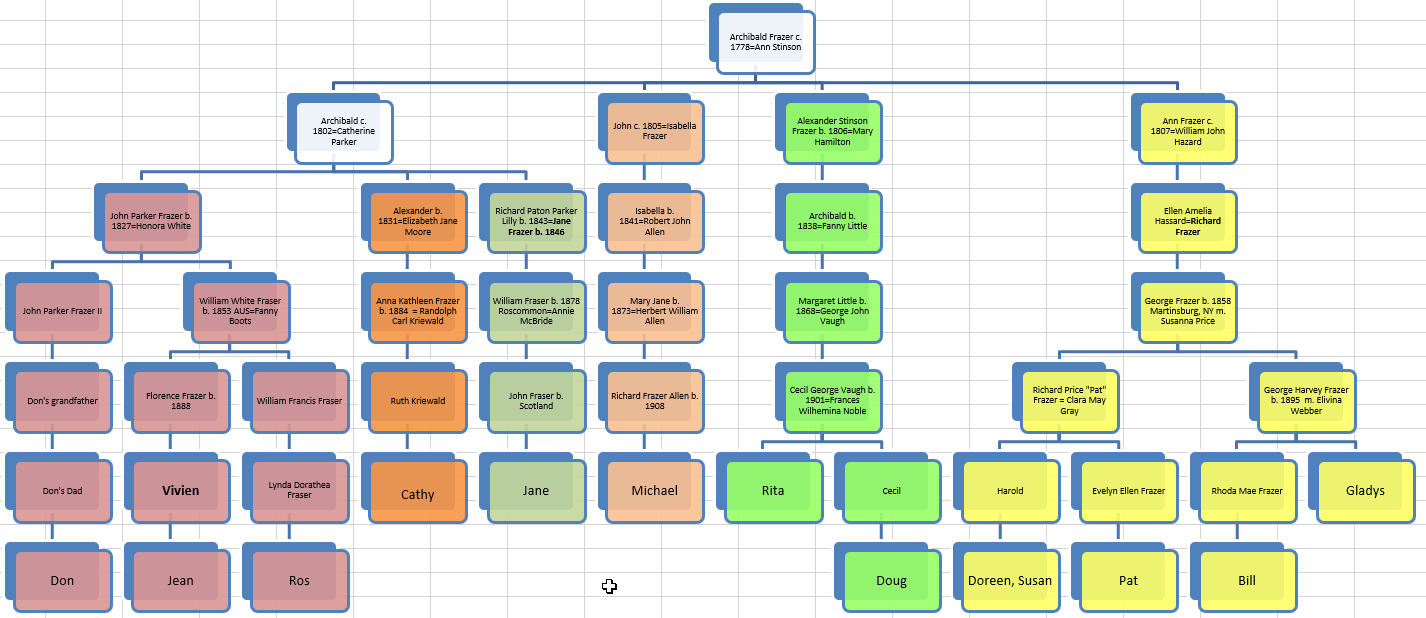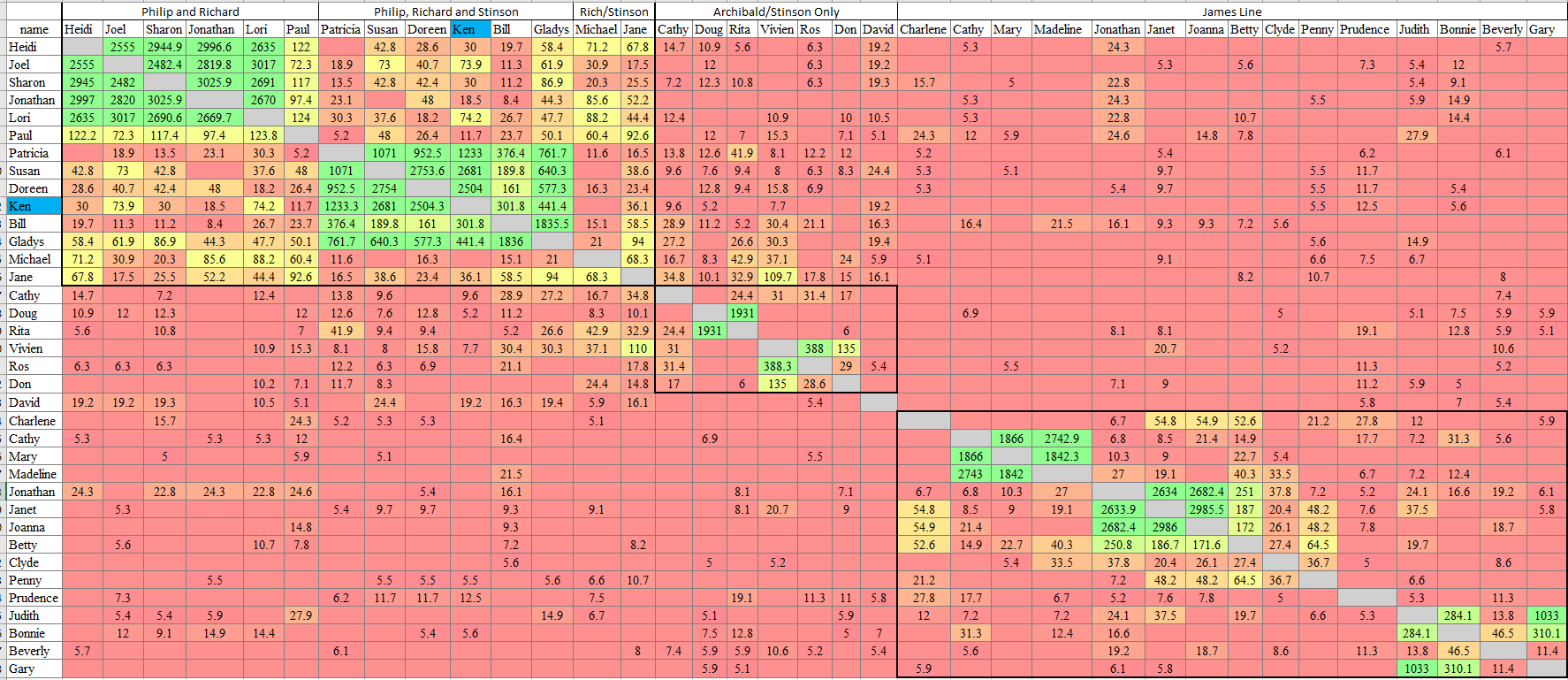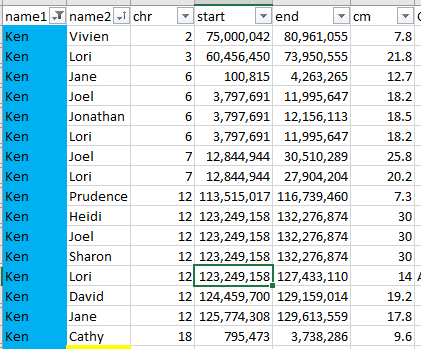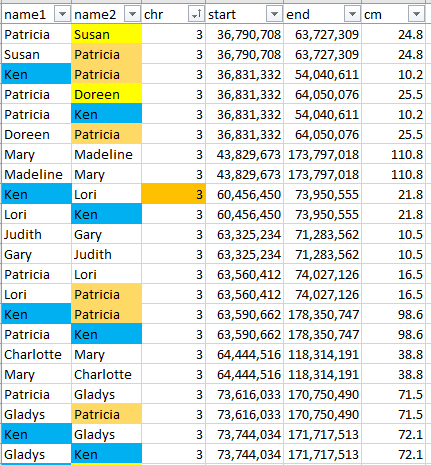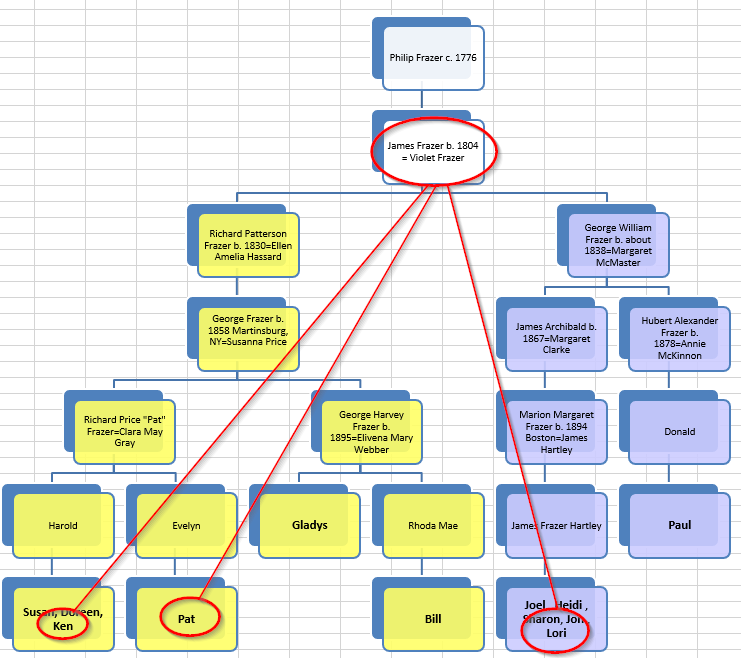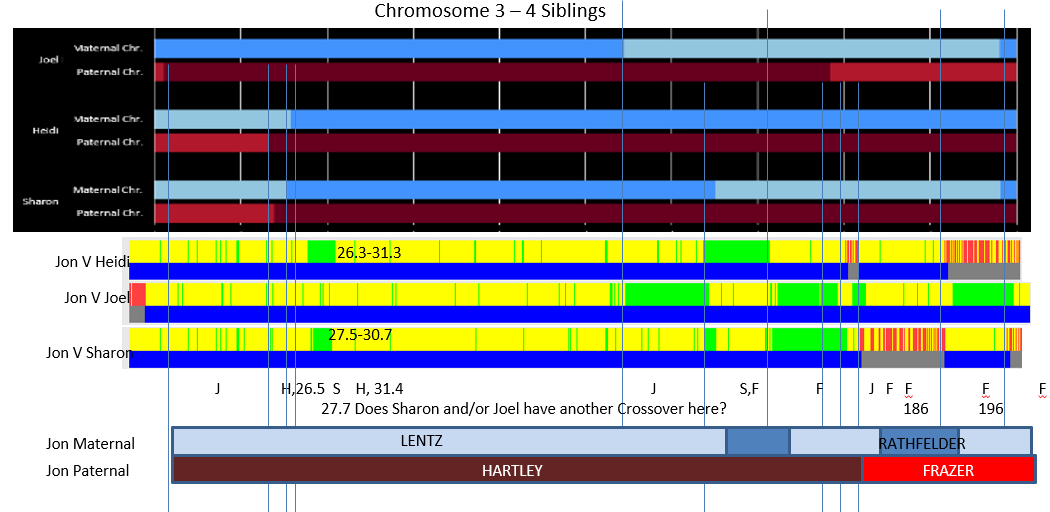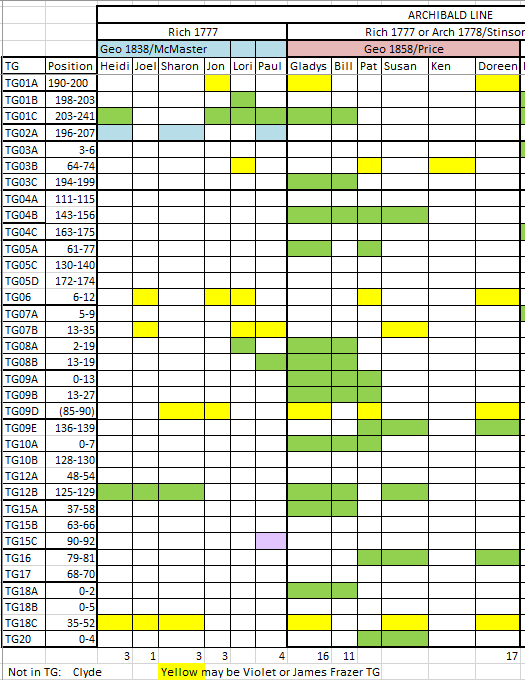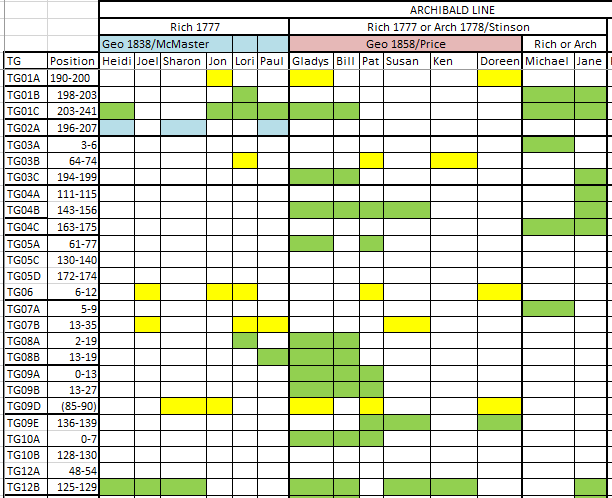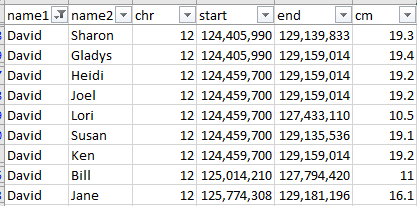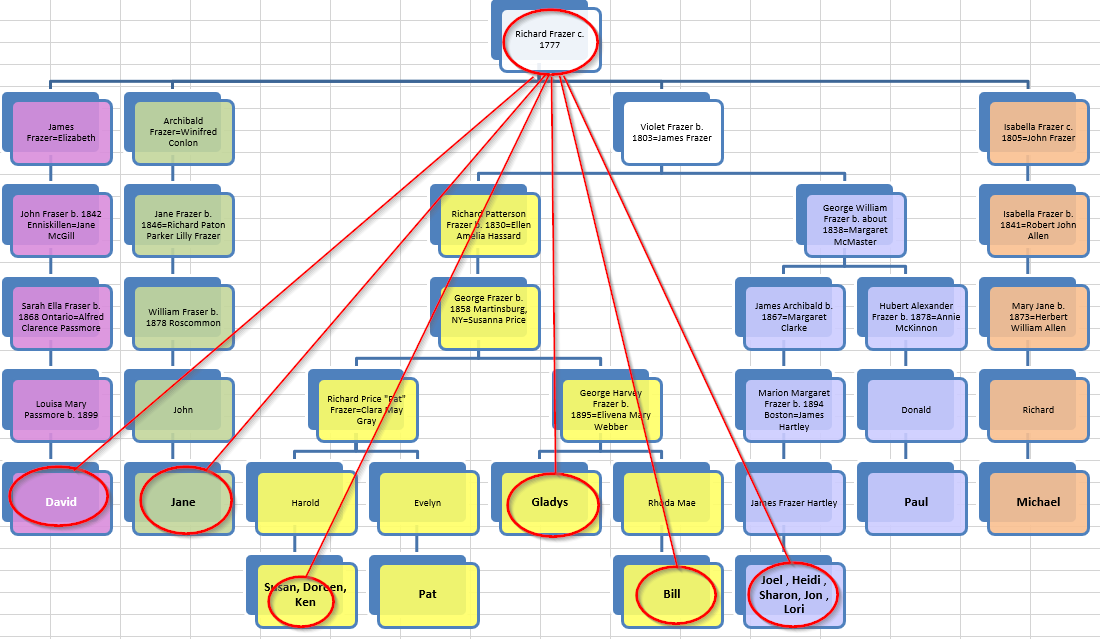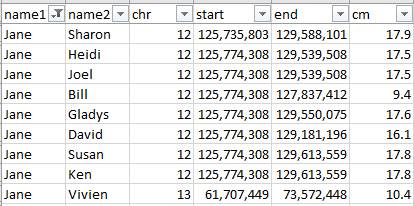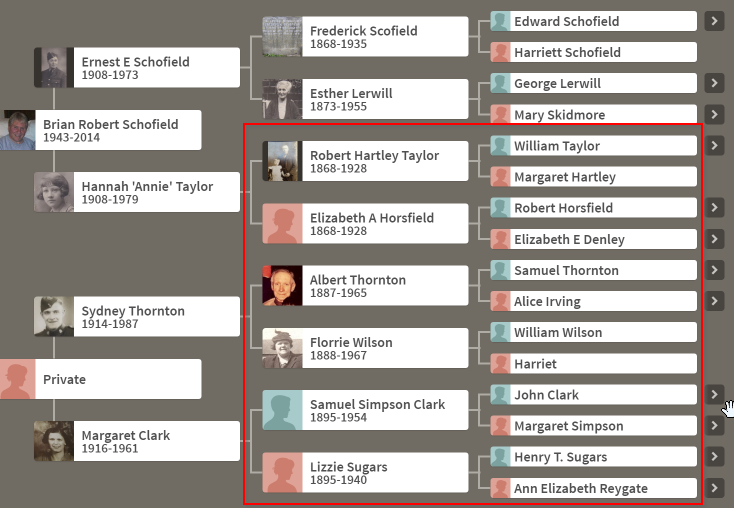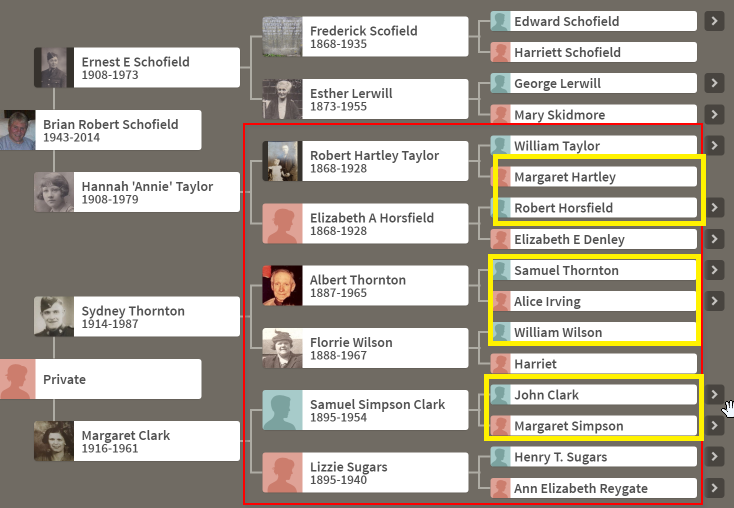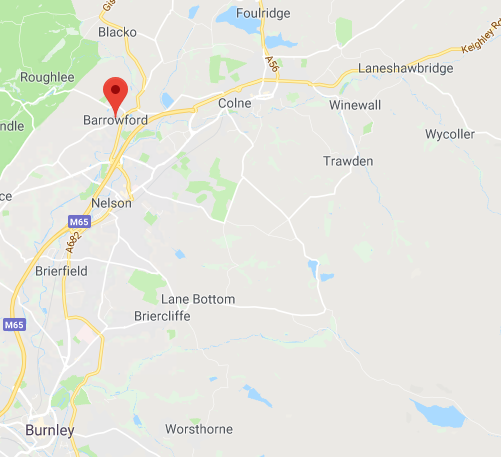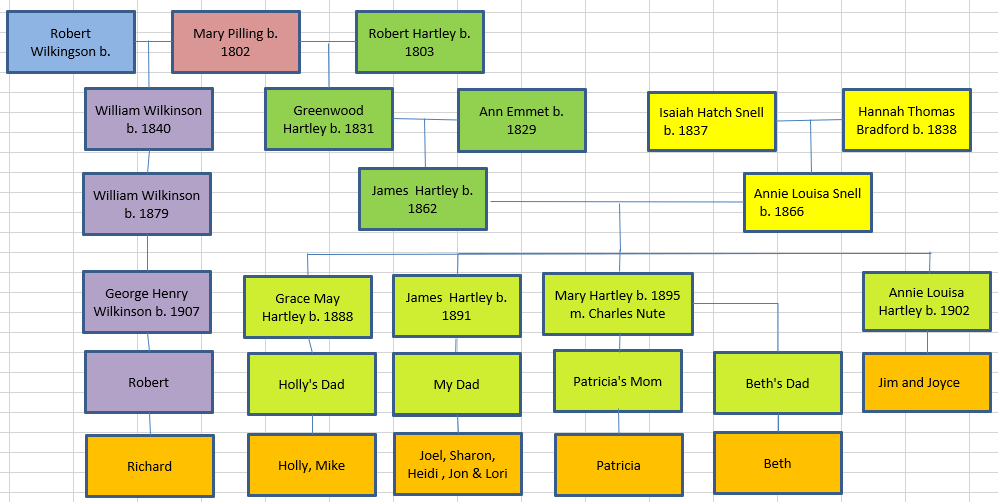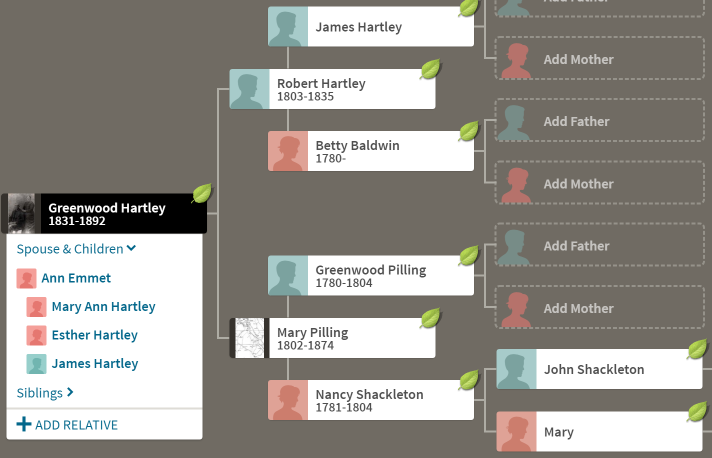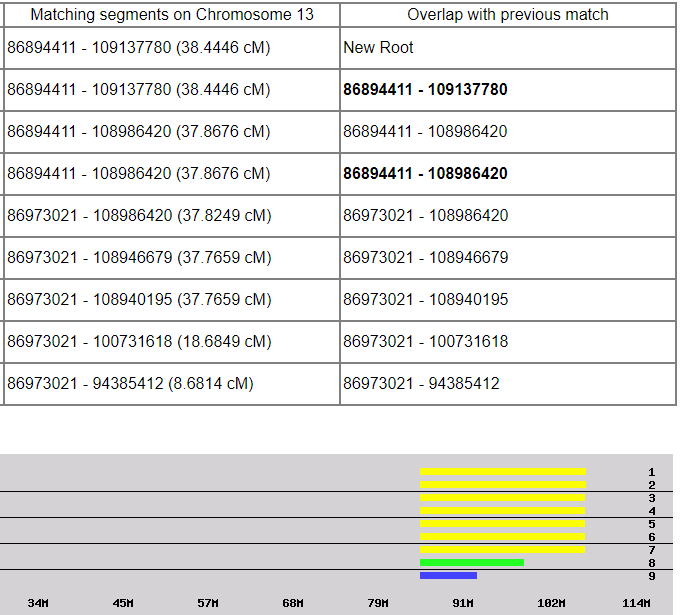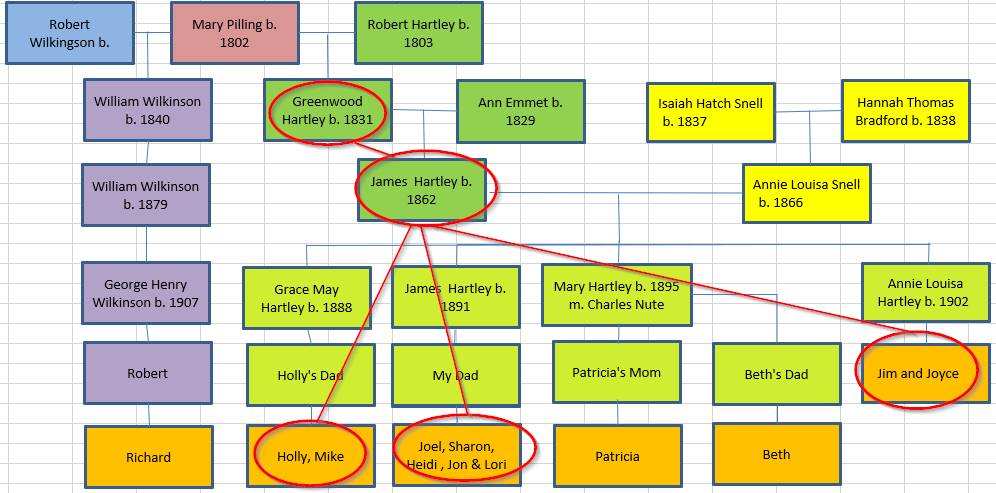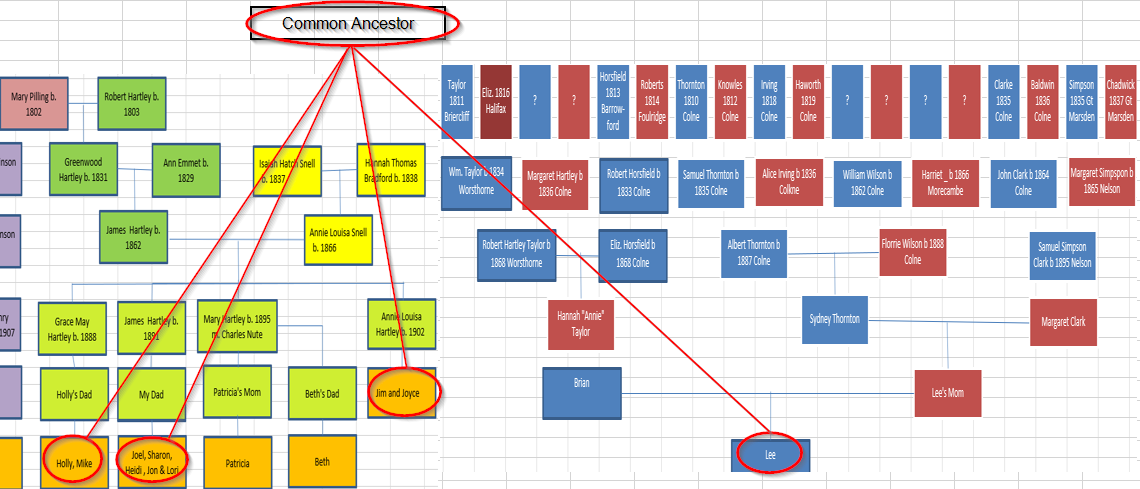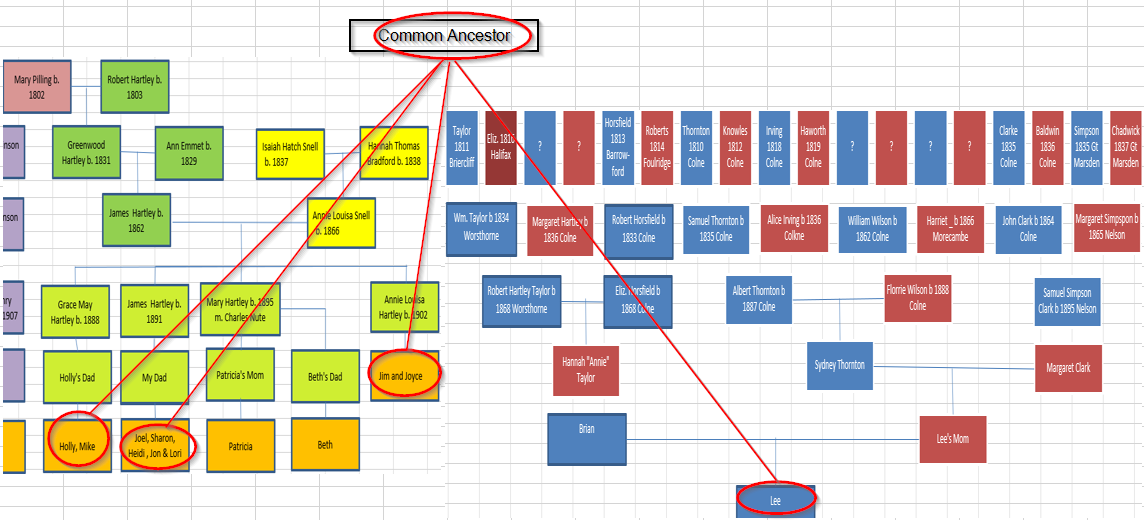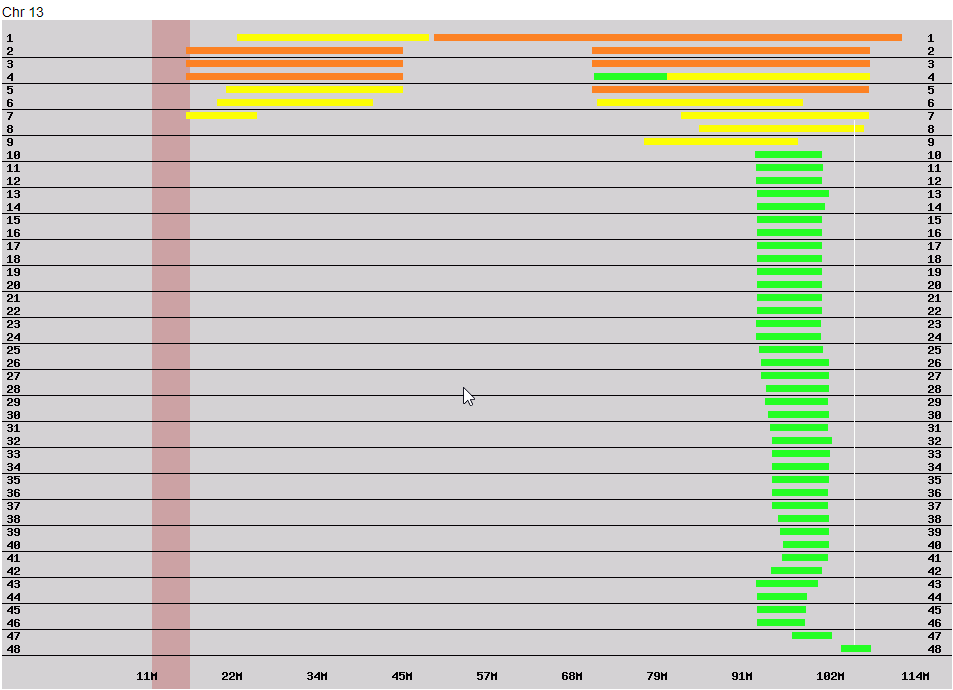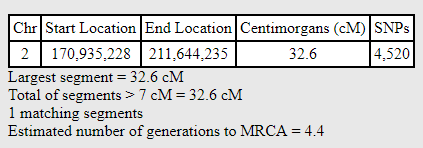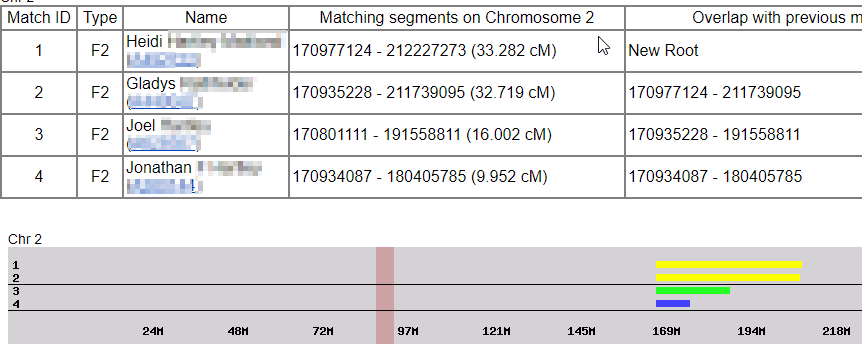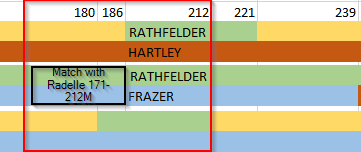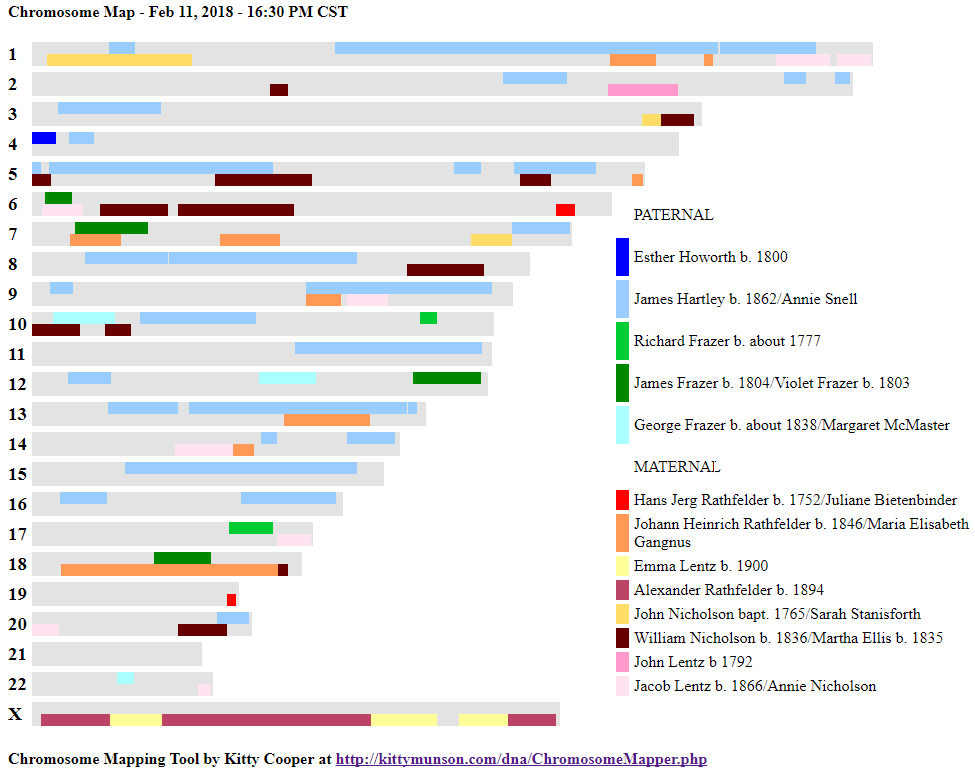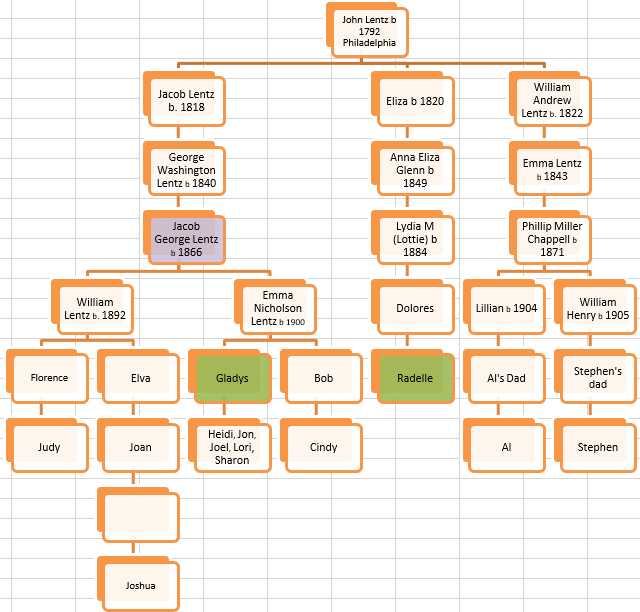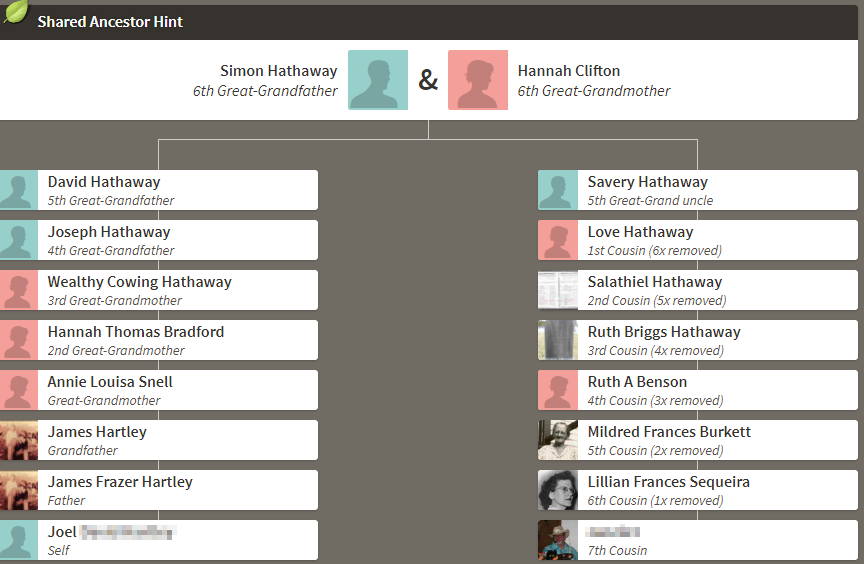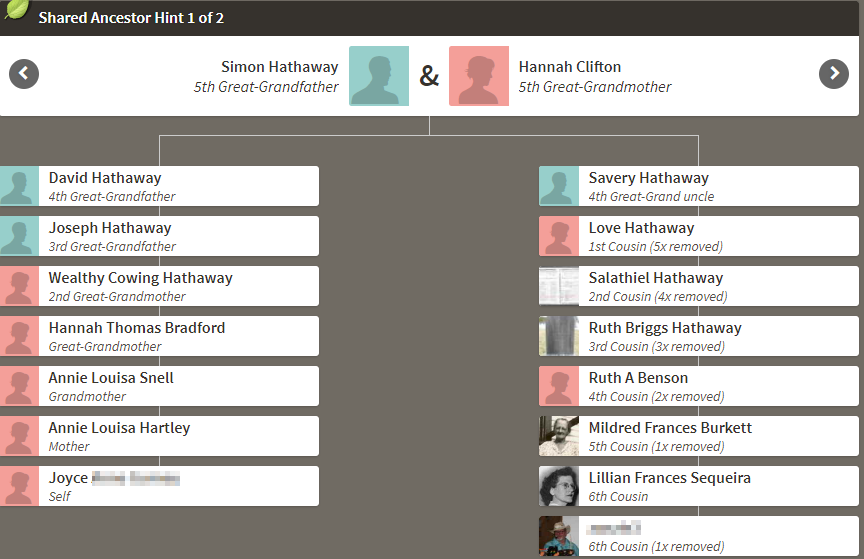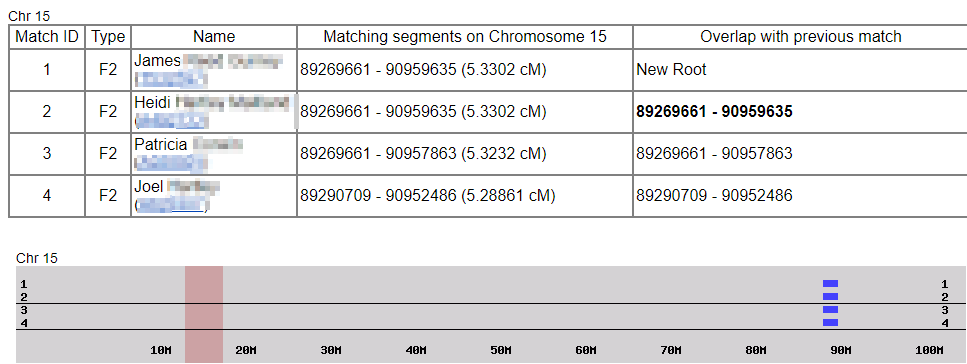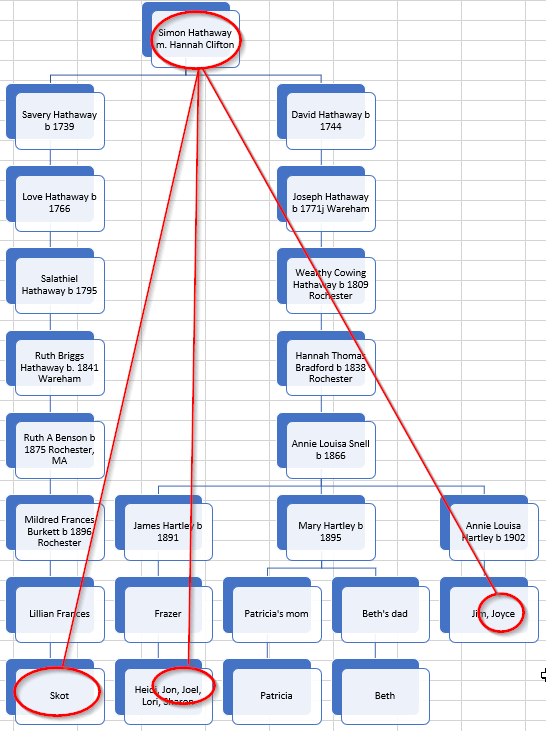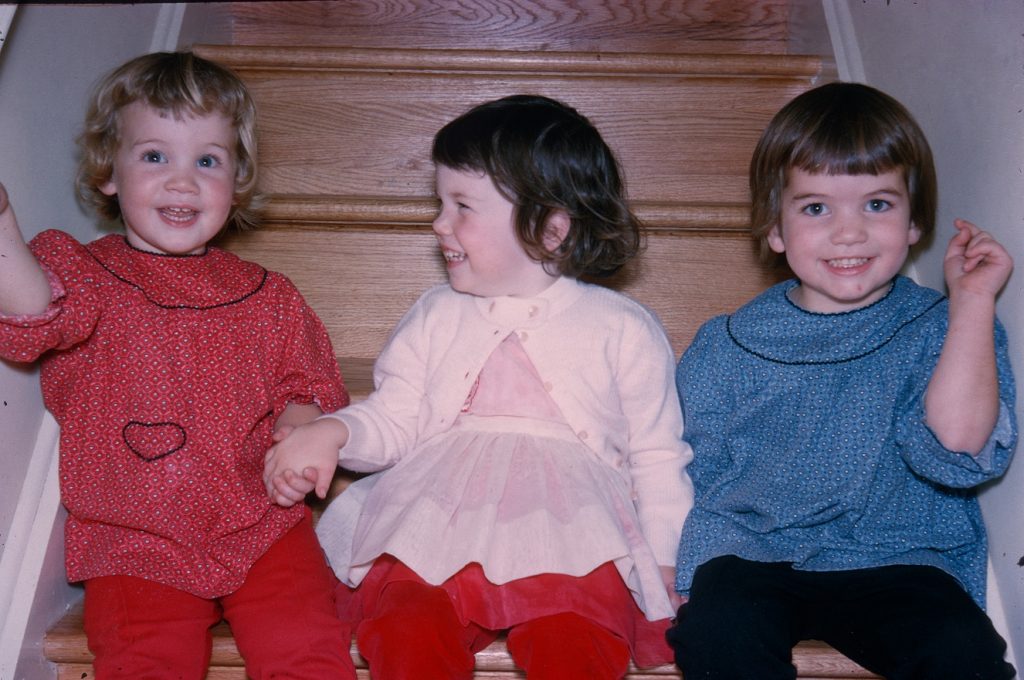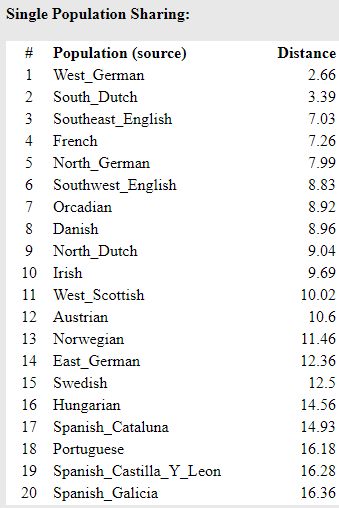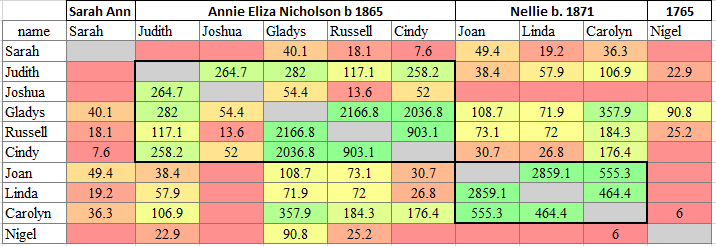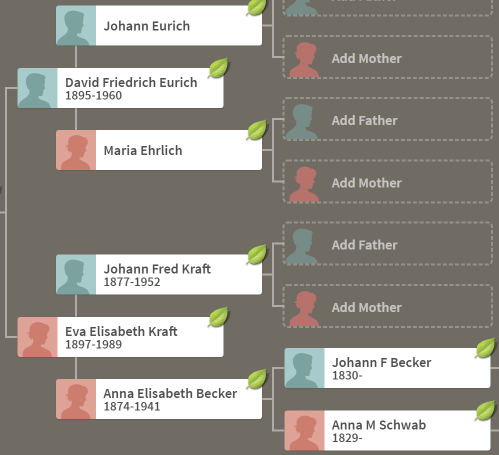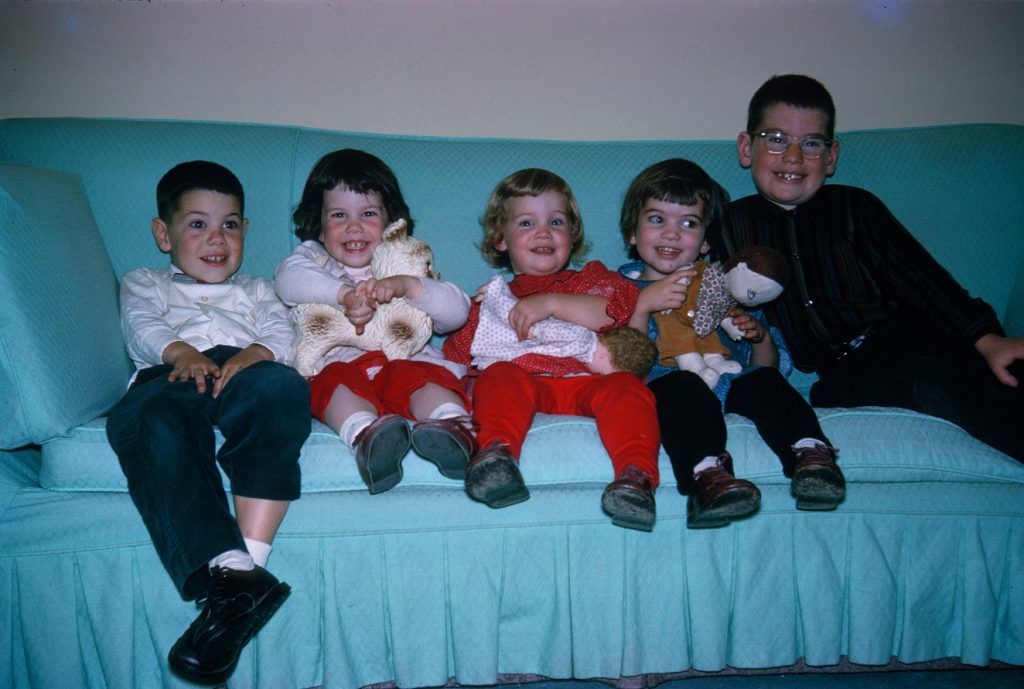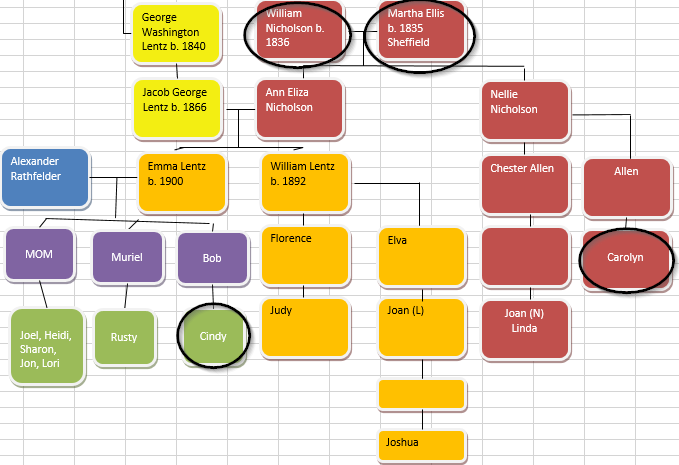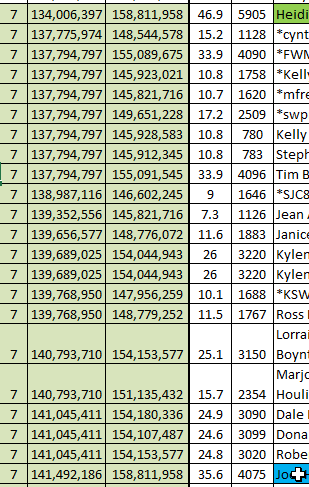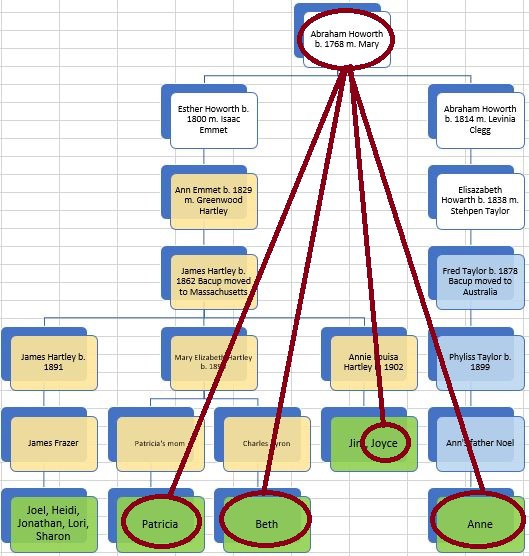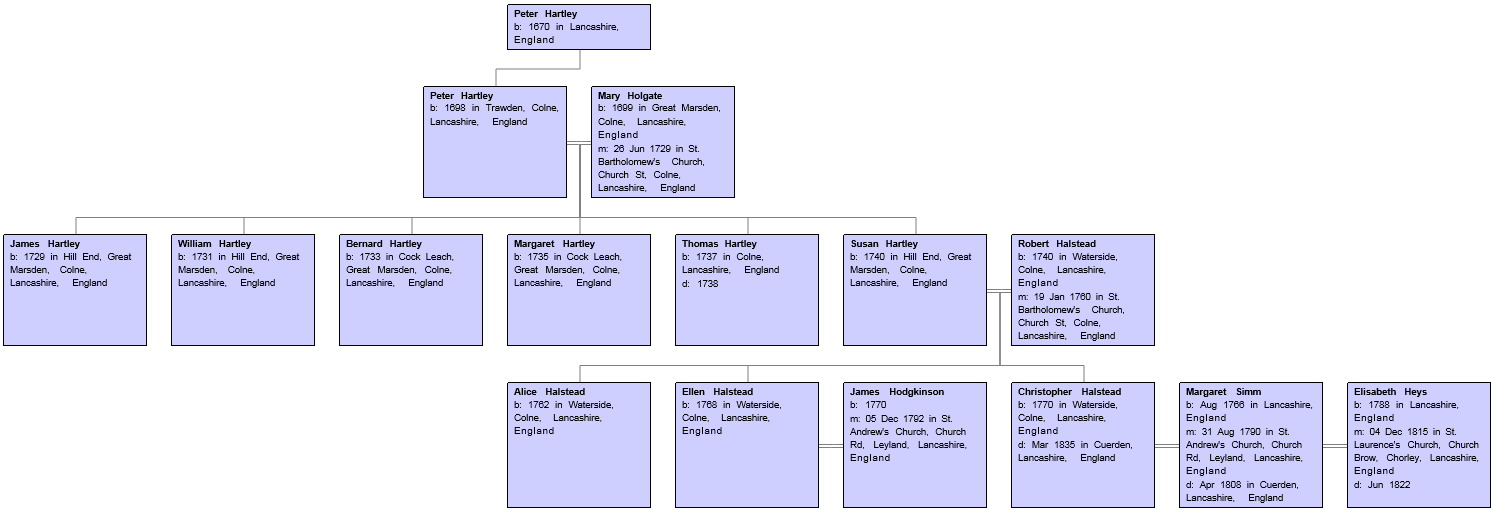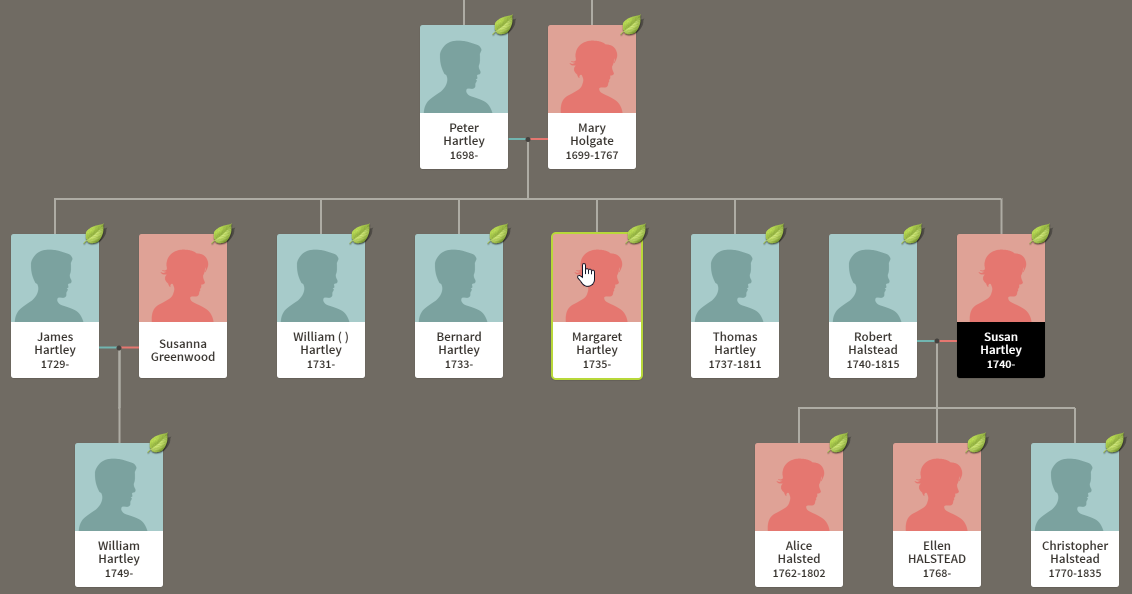Ken’s DNA test came in recently to Family Tree DNA. Then it was uploaded to Gedmatch. One important thing about Ken’s test results is that he is the third of three siblings to have taken the DNA test. That means that it is possible for Ken and his two sisters to figure out what DNA they got from their four grandparents. This is important in figuring out how you match other people by DNA.
Ken’s Genealogy
Ken descends from three different Frazer Lines. I am in this line.
Notice that James Frazer married a Violet Frazer. Yes, they were cousins. It seems weird today, but this apparently was not as weird in the early 1800’s. I am not completely sure of this line. I know that Violet married James, but I am not completely sure that James was the son of Philip. It would make sense as James first son was named Philip which may have been in honor of James’ father. This would have been a common naming practice but not a hard and fast rule.
Here is another line I’m in:
This line descends from Richard who was Philip’s brother. Here Violet’s father at least is quite certain. I don’t know who Richard’s wife was. This is a bigger branch of the family. These branches shown are only those that have taken the DNA test. David on the left matches, but he hasn’t been connected for certain by genealogy. Jane was added to line by DNA also (in conjunction with some probably genealogy) but she was already in another Frazer Line.
Here is the third line Ken is in.
One good thing about this line is that we have a wife for Archibald at the top. Archibald is another brother of Philip and Richard. Archibald’s wife was Ann Stinson, so I think of this as the Stinson Line. Another thing about this Frazer line is that some of the people that are in it are only in the Stinson Line. That is, except for the yellow line, Michael, and Jane.
Ken’s DNA Compared to Other Frazer DNA
Here is how Ken compares to other Frazers descending from North Roscommon County, Ireland.
I put all the matches in a matrix:
I put the matches into categories. David is in the wrong area. He should be with the Richard Frazer descendants – at least this was our guess. I lumped all the James Frazer Line together as the Archibald line does not, in general have large matches with them. They are in the bottom right of the matrix.
Ken is my 4th cousin. He matches my brother Jonathan at 18.5 cM and my sister Lori at 74.2 cM. Ken is a 3rd cousin once removed to Paul and matches him even less at 11.7 cM. This just shows the randomness of DNA inheritance. Ken’s DNA match with Lori is above average and his match with Paul is below average. However, they are both within range for either 3rd cousin once removed or fourth cousin.
Ken’s Frazer DNA More Specifically
The above chart shows where Ken, highlighted in blue, matches other Frazers. To get where he matches them on each specific chromosome, I go to Gedmatch’s ‘Multi Kit Analysis’. I choose all the DNA testers in the Frazer project. Then I download the individual matches. This gives me over 3200 matches. I also change the names of the people to make them more private. I usually take out the last name. Unfortunately, I didn’t distinguish between my brother Jonathan and the Jonathan on the James Line. Hopefully, I’ll be able to figure that out.
Here is a summary of Ken’s matches that are at the level of James and Violet Frazer or above. I took out his closer matches as the closer you get to a relative, the more lines you may match on.
- Vivien and Cathy are from the Archibald Frazer/Stinson Line
- Lori, Jonathan, Joel, Heidi and Sharon represent the James/Violet Frazer Line
- Prudence is from the far-away James Line
- Jane may match Ken in either the Richard Frazer or Archibald Frazer/Stinson Line
- David is not certain by genealogy, but I have placed him for the time being in the Richard Frazer Line
Ken and Triangulation
What I am looking for are Triangulation Groups or TGs. These are threesomes of matches all on the same part of the chromosome. These matches indicate a common ancestor. This could be important to figure out whether a specific DNA match with Ken is the in the Richard group, the Archibald group or perhaps the Philip group.
Ken and Lori – Chromosome 3
Ken matches my sister Lori on Chromosome 3.
I have added some of the other matches for comparison. Madeline, Mary, Gary and Judith are on the James Line, so they can be ignored for this Archibald Line match.
Here we have a new Triangulation Group (TG). Lori matches Ken and Patricia and Ken and Patricia match each other.
This shows that the Chromosome 3 TG represents DNA from James Frazer or Violet Frazer. Lori was the 5th and my most recent sibling DNA tester. She is the only one of my siblings that matched Pat and Ken. This is why:
The top part is a map of the DNA for me and my sisters Heidi and Sharon. This was done by Martin Macneill from our ‘raw’ DNA. The lighter red is Frazer DNA. Heidi got Frazer DNA up to about 26M. Sharon got Frazer DNA up to 27M. The match Ken has with Lori is at 60-74M. So Lori is my only sibling out of 5 that could match Ken.
This TG on Chromosome 3 gives strong evidence to support the Frazer tree up to James and Violet Frazer. We can’t tell from this TG whether the DNA represents James or Violet Frazer. It would have to be one or the other. We do know that it is Frazer DNA.
Here I have added Ken to the TG Matrix:
This is just the part of the Matrix that has people descending from James and Violet Frazer. The yellow boxes indicateTGs that probably represent James and Violet Frazer.
Chromosome 12 in the Age of Discovery
I feel like I’m in the Age of Discovery for DNA. Here are some Chromosome 12 discoveries. Actually, a TG12B above has already been discovered. However, there are a few interesting points about this TG.
First, there are quite a few people in this TG. There are eight people shown above in TG12B. Secondly, David, who I mentioned above, is in this TG. David is the ninth person in TG12B. Thirdly, Jane is in this TG. Jane does not descend from James and Violet, but she does descend from Violet’s father Richard. This TG is not likely an Archibald/Stinson TG as Heidi, Joel and Sharon do not descend from that Line. This seems to confirm that David should be in this Richard Line.
Here are David’s Chromosome 12 matches:
I had actually pointed out David’s TG in previous Blogs, so perhaps this is more like the age of re-discovery.
This tends to solidify the TG and relationship that David has to the Frazer DNA Project. If the tree I drew is correct, then David would be 4th cousin to Jan and Gladys and 4th cousin, once removed to Ken, Bill, Sharon, Heidi, Joel and Lori. In support of my theory for David, I note that his level of DNA matches with the group and Jane’s level of DNA matches are very consistent with each other. Here are Jane’s match levels for comparison:
Next Up
I would like to get started with the Visual Phasing for Ken, Susan and Doreen. This should at least separate out what DNA they got from their Frazer grandfather and what DNA they got from their Gray grandmother. If I find out more about their maternal side, I will be able to map to those two grandparents also – depending on how many known matches they know on that side.
Summary and Conclusions
- At one point, I was tentative about joining the genealogies of my family with those of the Richard Patterson Frazer Branch. Now, with all the DNA matches, the relationship is very clear.
- I am reminded of the connection between David and our Frazer branch. He has a Frazer ancestor that he has not linked to our Frazers by genealogy. However, David is certainly linked to our Frazer project by DNA. That link appears to be on a Frazer line. However, it is possible that the link may be on a collateral line.
- I’m looking forward to starting the visual phasing of Ken and his two sisters

